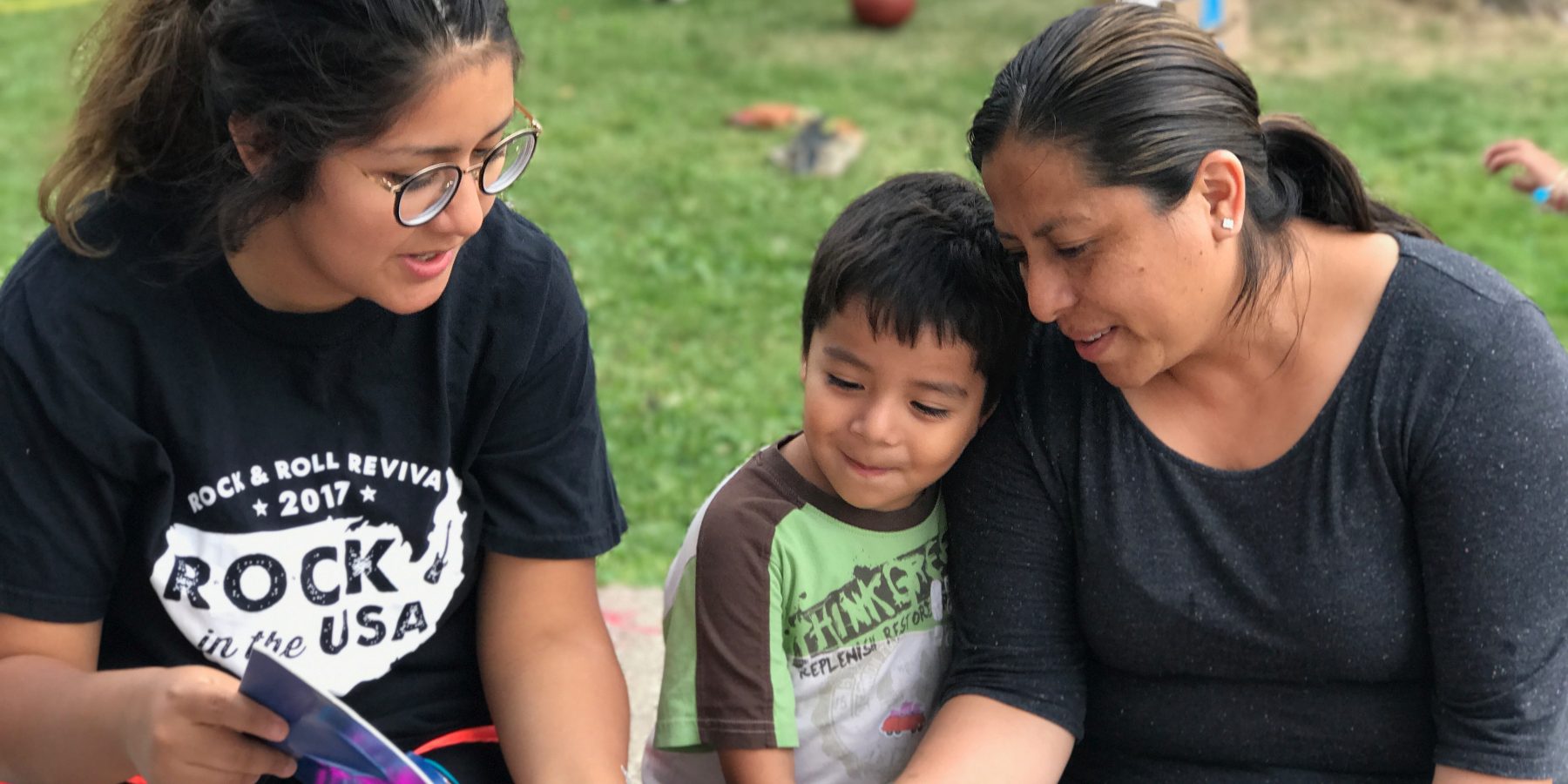Focused efforts in Northfield, Minn., lead to communitywide improvements in third-grade reading
They can be any student, in any classroom. When independent reading time begins, they keep their heads down, turning the pages of their books and trying to blend in. They’re playing the part, but they’re falling behind.
They’re called “pretend readers,” said third-grade teacher Rich Guggisberg.
“They’re at their desk looking the part, and they don’t want to stick out,” he explained. “Every year, I want to get through to those kids how important it is to be a successful reader and how many doors that can open for them someday.”
Thanks to a collaboration across Northfield, Minn., led by StriveTogether Cradle to Career Network member Northfield Promise, those doors are starting to open, as communitywide efforts support more third-graders to become better readers.
Focusing on five
 For five years, reading scores in Northfield were declining steadily. In 2017, according to the Minnesota Comprehensive Assessment, just 57.1 percent of Northfield third-graders were proficient in reading. Community leaders knew that reading at grade level is one of the strongest predictors of success later in school. But they didn’t know how to get to 100 percent proficiency.
For five years, reading scores in Northfield were declining steadily. In 2017, according to the Minnesota Comprehensive Assessment, just 57.1 percent of Northfield third-graders were proficient in reading. Community leaders knew that reading at grade level is one of the strongest predictors of success later in school. But they didn’t know how to get to 100 percent proficiency.
Instead of setting their sights on perfection, the team took a different approach, explained Zach Pruitt, executive director of Northfield Healthy Community Initiative, which houses Northfield Promise.
“We so often look at these communitywide outcomes as these big numbers, which they are, but they’re also made up of a lot of smaller numbers,” Pruitt said. “If we can move the dial with smaller groups of kids, that collectively leads to a larger impact.”
To tackle the persistent decline in reading proficiency, the Northfield team set an annual goal that, over time, will add up to the ultimate goal of every child reading at grade level, while narrowing the achievement gap for students of color and those from low-income families. The goal — a proficiency increase of at least 3 percent each year — turns out to equal about five students in each third-grade class. The Move 5 Kids initiative was underway.
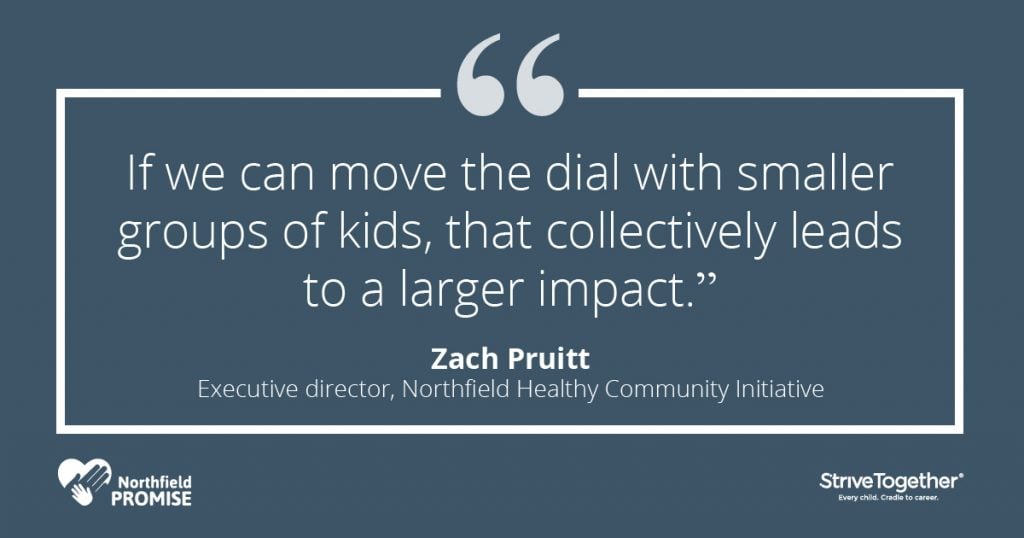
Empowering teachers
After fall assessments, third-grade teachers in Northfield’s three elementary schools received their first lists. These lists showed the students in their classes who were not projected to be proficient in reading by the following spring, based on their test results. The lists included kids who often fall through the cracks — kids who need a boost but don’t qualify for additional services, relying on their classroom teachers for extra support.
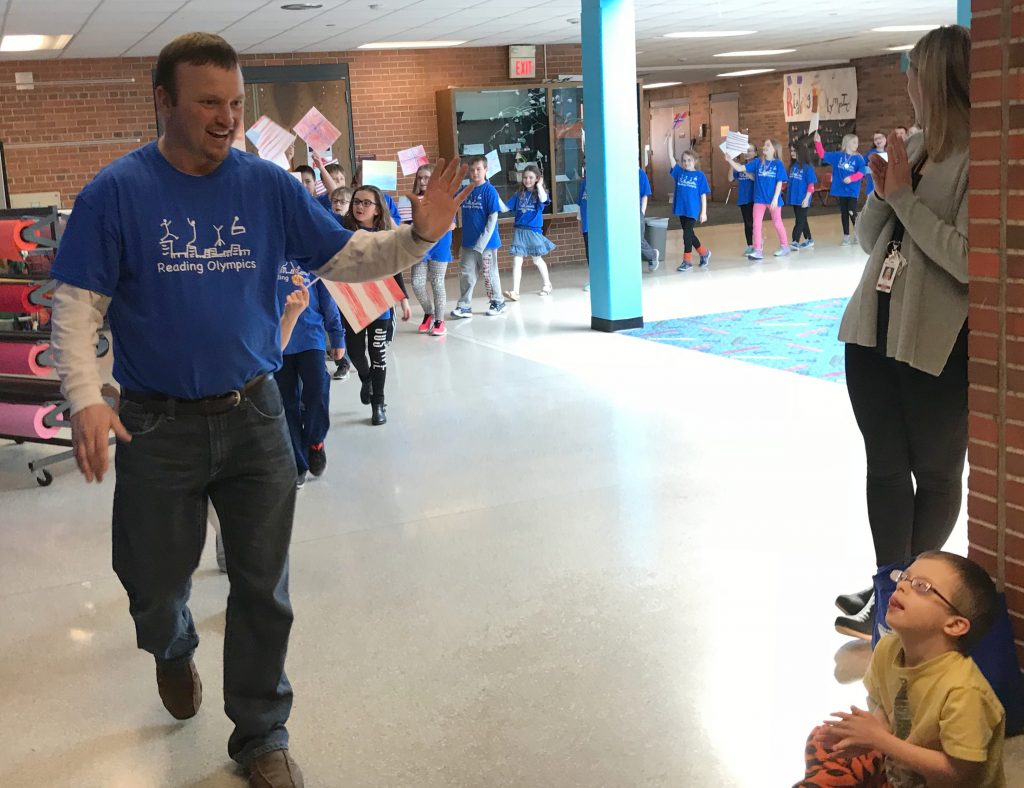 The lists delivered to teachers came with something else: Money. Too often, new initiatives leave teachers wondering how to fit in the extra work required. Instead of placing an additional burden on teachers, the team in Northfield wanted to empower them by offering funding, volunteers and other resources to support their ideas for their classrooms.
The lists delivered to teachers came with something else: Money. Too often, new initiatives leave teachers wondering how to fit in the extra work required. Instead of placing an additional burden on teachers, the team in Northfield wanted to empower them by offering funding, volunteers and other resources to support their ideas for their classrooms.
“Some of the teachers thought it was too good to be true,” said Scott Sannes, principal of Sibley Elementary School. “We told them, ‘We know you’re the experts in instruction. We know that you know these students best, and now we want to hear from you the areas that you need support in.’”
Northfield Promise developed a simple process for teachers to make their requests for funding or volunteer support. Northfield’s third-grade teachers responded with new ideas to deepen their support for their students’ reading.
Sparking success in the classroom
In classrooms across the community, those ideas came to life. When Guggisberg realized the Winter Olympics were coming, he suggested his school host a “Reading Olympics.” Students earned reading medals, passed a torch between classrooms and celebrated at a closing ceremony.
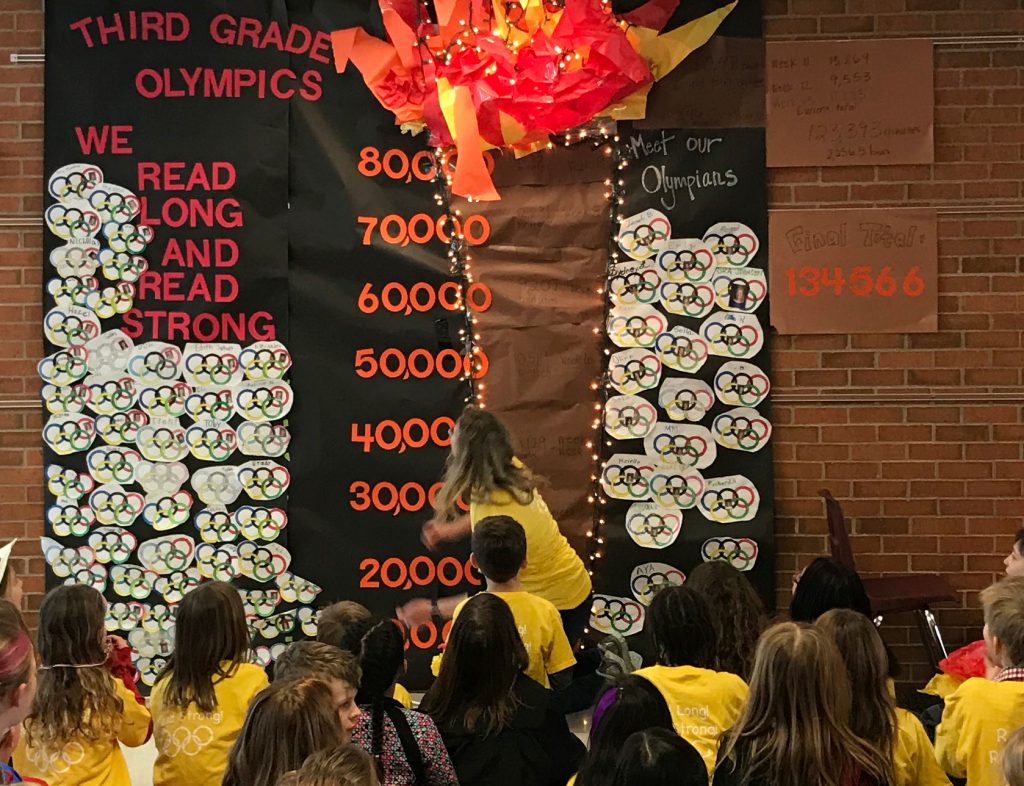 The school also hosted a breakfast book club and quiz bowl competitions. In third-grade teacher Allison Sweeney’s classroom, students earned incentives for reading at home. For hitting milestones as a class, students received rewards like Pajama Day, extra recess time or board game sessions, reaching these bonuses about once a month.
The school also hosted a breakfast book club and quiz bowl competitions. In third-grade teacher Allison Sweeney’s classroom, students earned incentives for reading at home. For hitting milestones as a class, students received rewards like Pajama Day, extra recess time or board game sessions, reaching these bonuses about once a month.
“Kids were reading significantly more than they were reading before,” she said. And, she added, the effects of that increased reading can last far beyond third grade. “The amount of vocabulary they’re getting exposed to and the extra practice sets them up for a lifetime of success.”
When teachers identified a need for additional support in the classroom, Sibley Elementary School hired a reading specialist who worked one-on-one with kids on the Move 5 lists. More support came from volunteers, many of them retired teachers. Other ideas led to investments in resources teachers will be able to use next year and beyond, including lesson planning tools, classroom intervention trainings and high-interest books for students.
Collaborating across the community
Along with new resources, the success of the Move 5 Kids campaign relied on stronger connections across Northfield. The initiative lent itself to working together because collaboration was where it started. The idea began during the StriveTogether Leadership Program, a collaborative learning environment designed to help communities accelerate their work to get better outcomes for kids and families. According to Pruitt, the experience changed the way the community tackled the challenge.
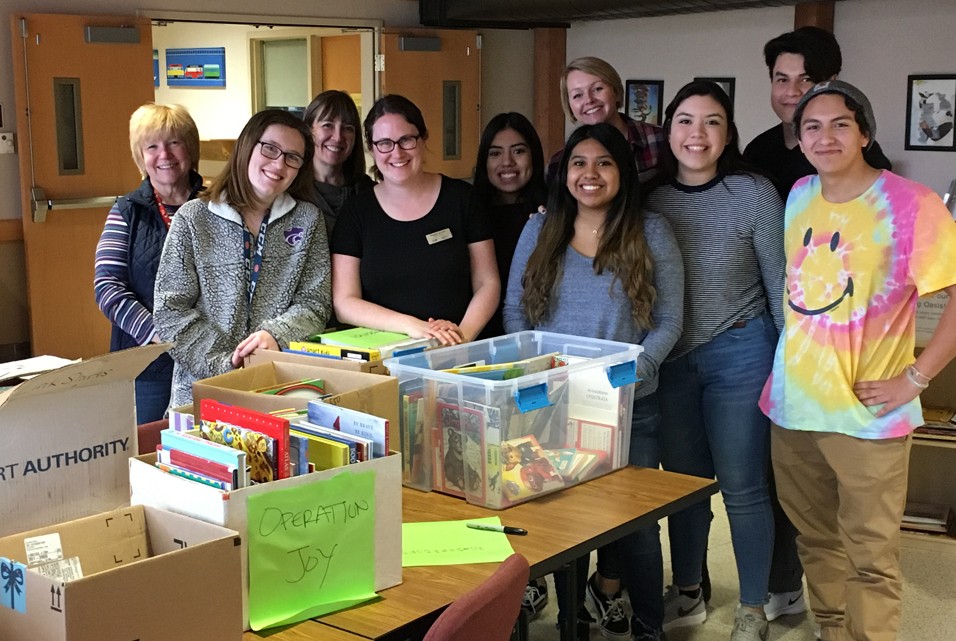 “It was an incredibly valuable process in thinking about how we approach this work,” Pruitt said. Through the StriveTogether Leadership Program, the team investigated factors that affect reading proficiency and made sure all of their efforts connect to their goal.
“It was an incredibly valuable process in thinking about how we approach this work,” Pruitt said. Through the StriveTogether Leadership Program, the team investigated factors that affect reading proficiency and made sure all of their efforts connect to their goal.
With this shared focus, teachers across Northfield’s three elementary schools exchanged ideas, talked through solutions and worked together in new ways, something that Sweeney says will continue in years to come.
“We’ve created better bonds between third-grade teachers. I feel a lot more comfortable now emailing somebody from another school and saying, ‘I’m struggling with this, anybody have any thoughts?’” she said.
Because of his work at Northfield Promise, Pruitt particularly appreciates the importance of developing new avenues of collaboration. “We’re a small community, and we need to have more opportunities to make sure that the different schools are working together,” he said.
Digging into data
Working together effectively starts with understanding current conditions, measuring what’s working and figuring out what’s not. “Part of this process was the idea that we have to be comfortable as a district and as a community in sharing our data,” Pruitt said.
Sharing data can cause discomfort, but the Move 5 initiative helped the community break down some uneasiness, he explained. This comfort with data is spreading across the district. “At the end of the day it’s about supporting kids, and it’s important for the adults to be able to align around that collective mission,” Pruitt said.
The district’s data and assessment specialist charted which classrooms had the greatest growth in reading, sharing graphs to help teachers visualize progress. Principals also started getting access to attendance reports, which Sannes says changed the way he was able to support students who were struggling.
“I was having conversations with those kids, talking to them about how things are going, talking to them about their reading logs and making sure they’re getting their minutes in at home. The data brought a different level of awareness,” he said.
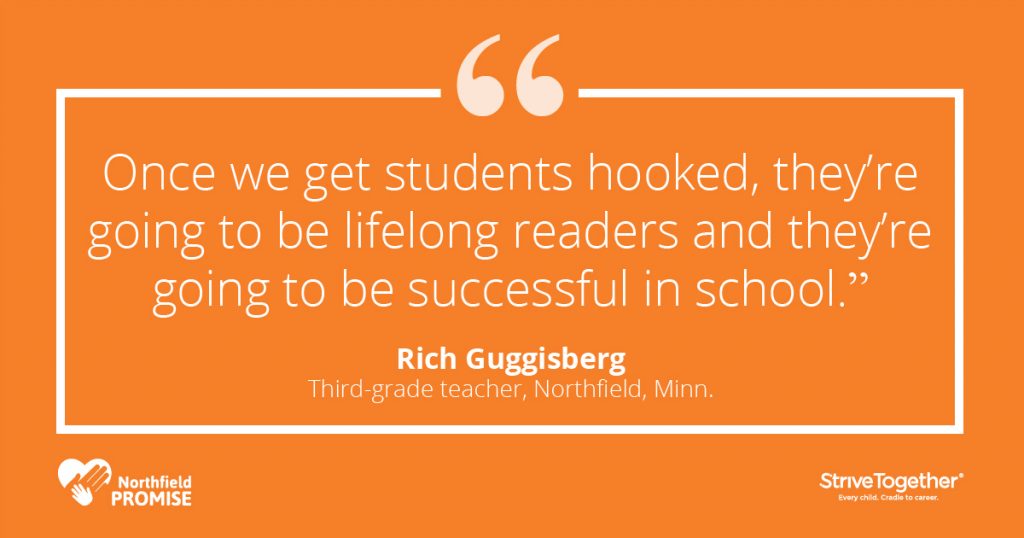
Celebrating success and moving forward
In the spring, the efforts across Northfield were put to the test. The community had spent the year focusing on the students behind the numbers and empowering teachers to create solutions, and these strategies paid off: The 2018 statewide assessment reversed the five-year decline. With a 6-percentage point increase, 63.9 percent of Northfield third-graders were proficient in reading.
 After the results were in, teachers and administrators gathered at a year-end meeting, looking back at data and hearing strategies from teachers whose students had seen the biggest improvements. Just as targeting individual students led to communitywide progress, the Move 5 Kids effort has led to a promising future of further success across Northfield. Third-grade reading efforts will continue with the ongoing use of resources and ideas and a new literacy curriculum launched in all three elementary schools.
After the results were in, teachers and administrators gathered at a year-end meeting, looking back at data and hearing strategies from teachers whose students had seen the biggest improvements. Just as targeting individual students led to communitywide progress, the Move 5 Kids effort has led to a promising future of further success across Northfield. Third-grade reading efforts will continue with the ongoing use of resources and ideas and a new literacy curriculum launched in all three elementary schools.
And it’s not just reading that’s improving in Northfield. Eighth-grade math scores had declined for four years, but now there’s another new bright spot to celebrate: Proficiency rates have increased by 12 percent over the past two years.
Although scores are important milestones, they’re not the only thing teachers look for. Guggisberg shared a different way to measure success among the students selected for his Move 5 list.
“Many of them went from that pretend reading to having that twinkle in their eyes. They’d say to me, ‘Look what happened to this character in this book,’ and you could tell that they were hooked,” he said. “Once we get them hooked, they’re going to be lifelong readers and they’re going to be successful in school. That’s something that will always stick with me.”
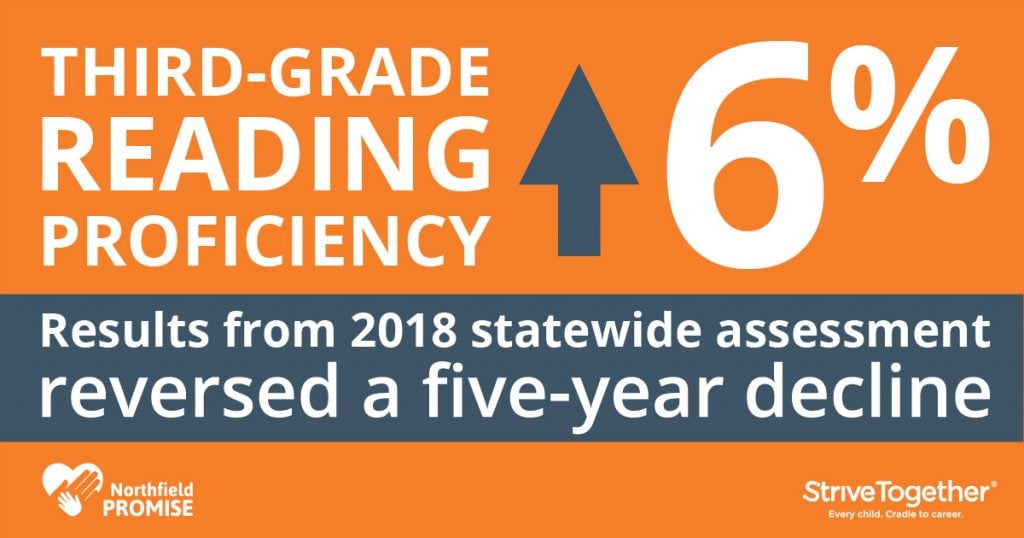
What changed in Northfield, Minn.?
- Focused efforts across Northfield’s three elementary schools reversed a five-year decline in third-grade reading proficiency, with a 6-percentage point increase in one year.
- Through the Move 5 Kids initiative, teachers supported students that had been identified as needing some extra reading support, implementing strategies with the help of designated funding.
- Teachers across Northfield’s elementary schools took advantage of increased opportunities to learn from each other and share ideas.
Key takeaways
Celebrate small successes — because they add up. Recognizing that communitywide outcomes can be intimidating to tackle, the Northfield team broke their goal down into manageable steps and translated the outcome to the specific number of students impacted.
Empower teachers to take the lead. Teachers know what their students need to succeed. Invest in resources and ideas identified by teachers, and support them with time, funding and data.
Use data to figure out where to focus. The Northfield team used assessment data to determine which students needed extra support and to track progress, developing a comfort with sharing data across the district to highlight and learn from successes.

